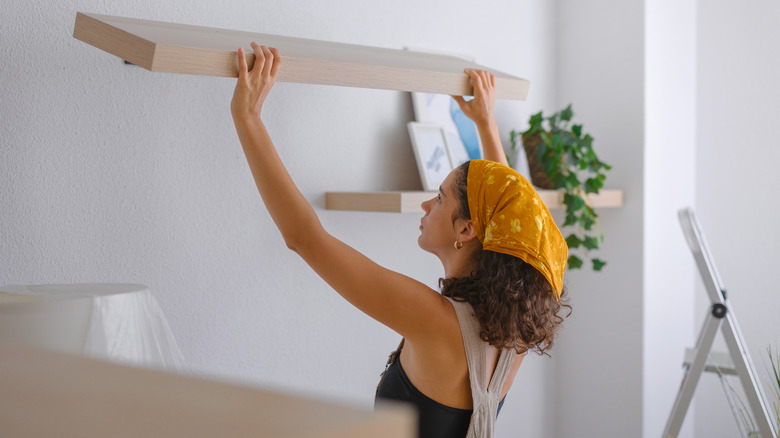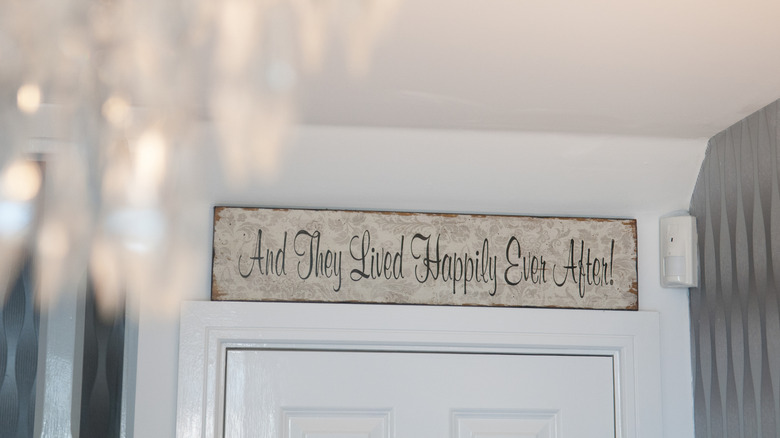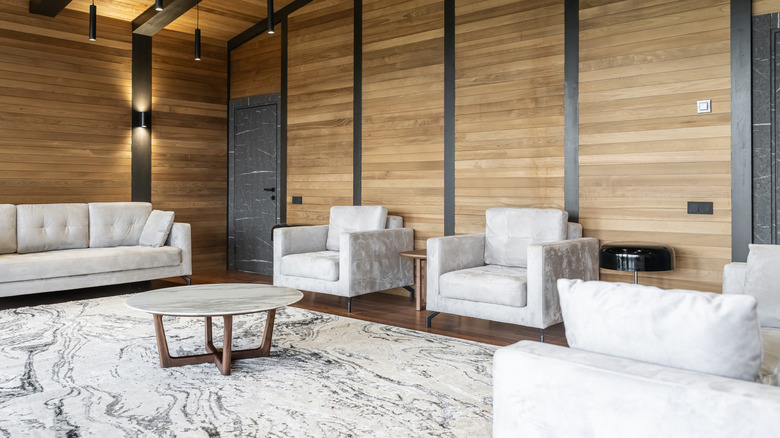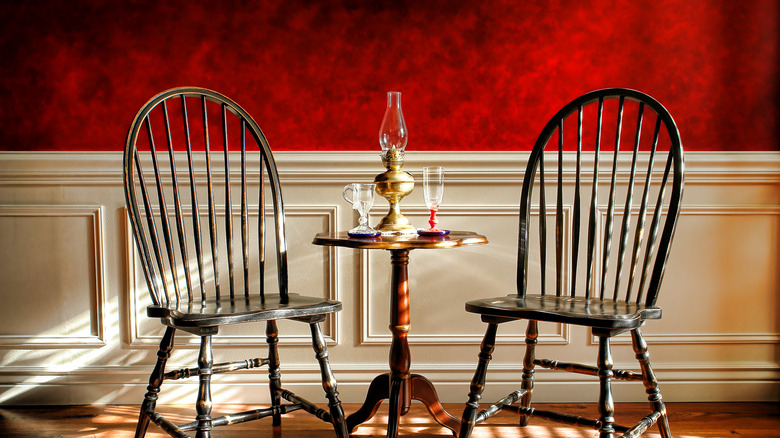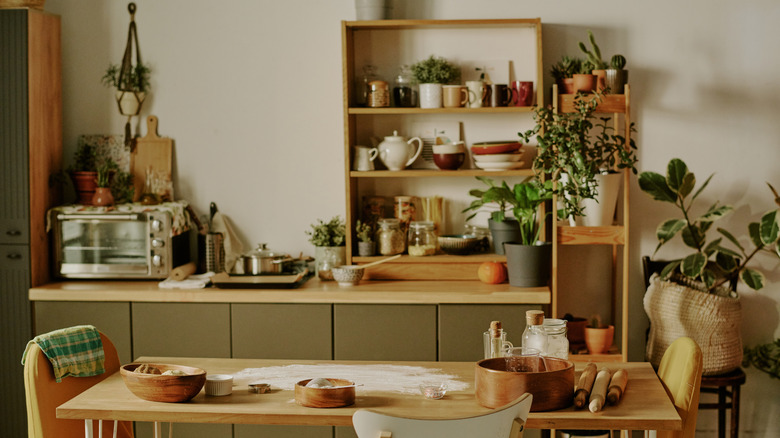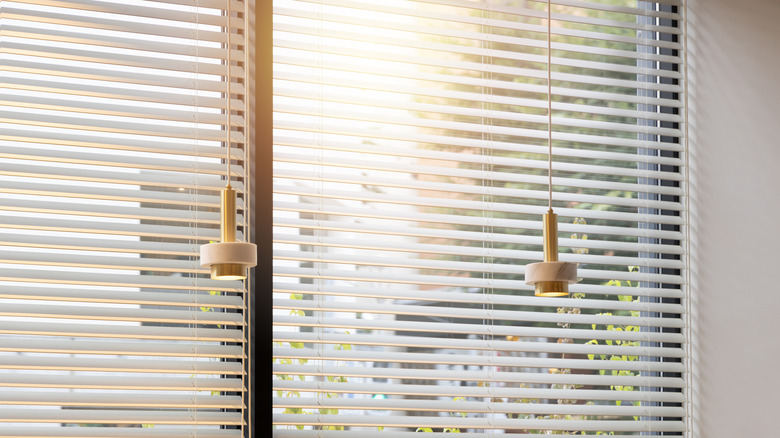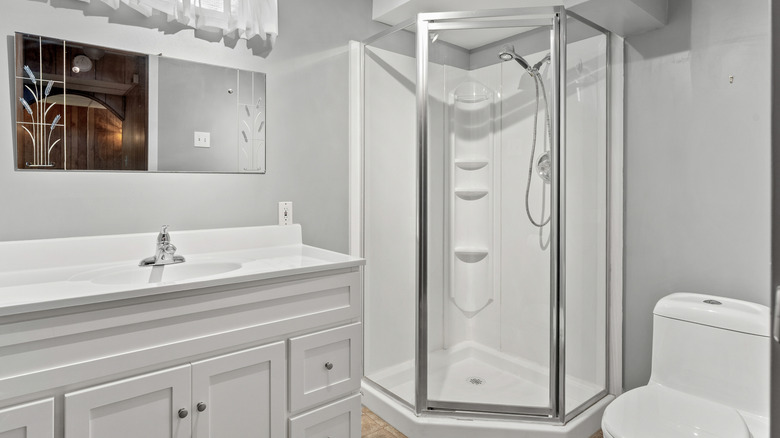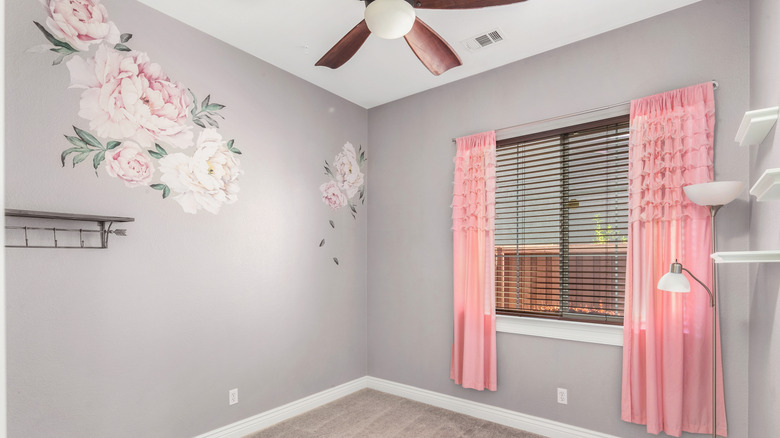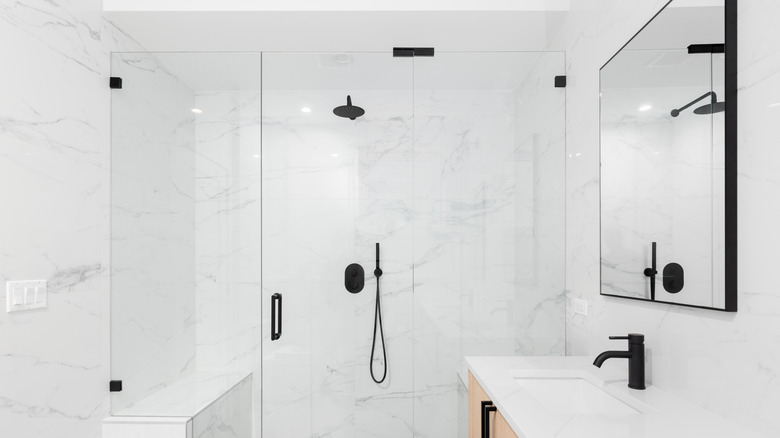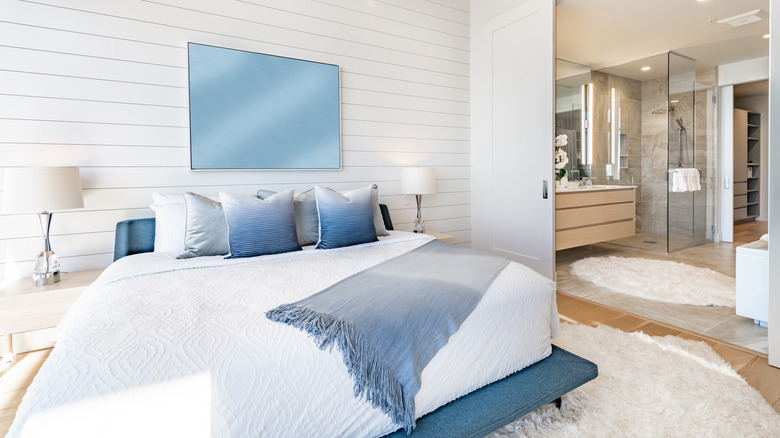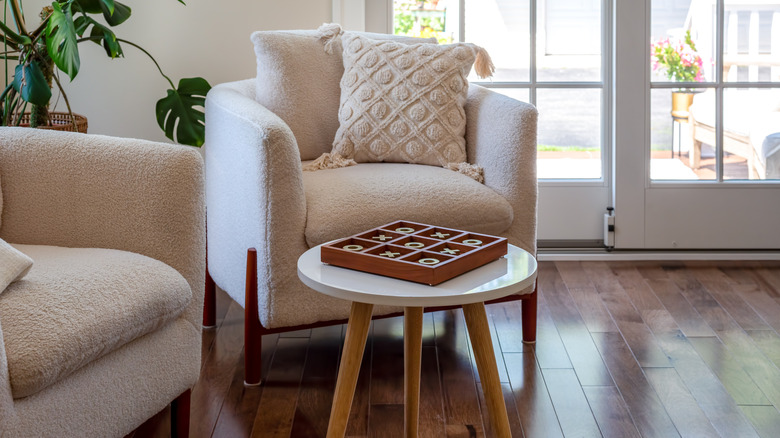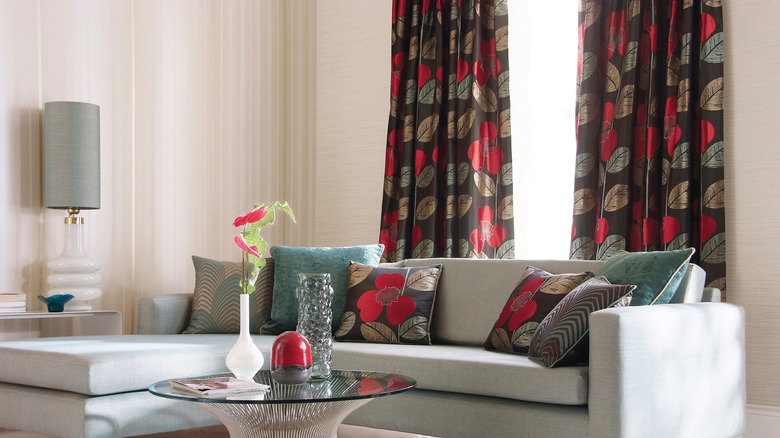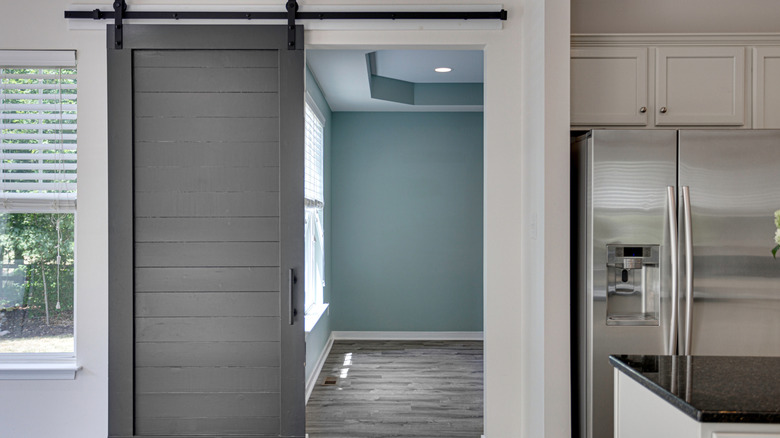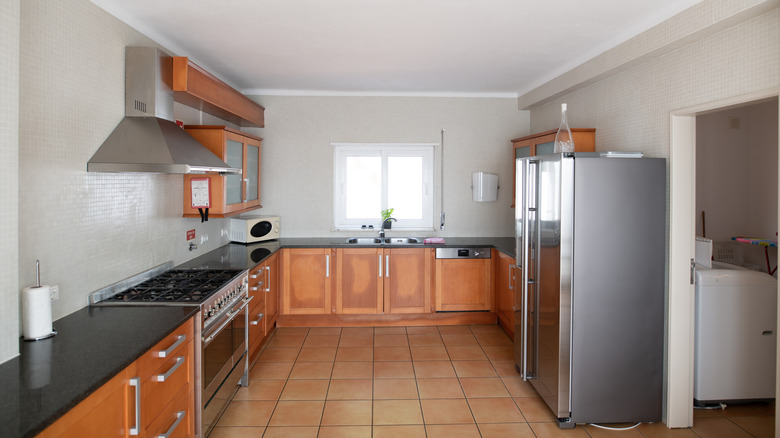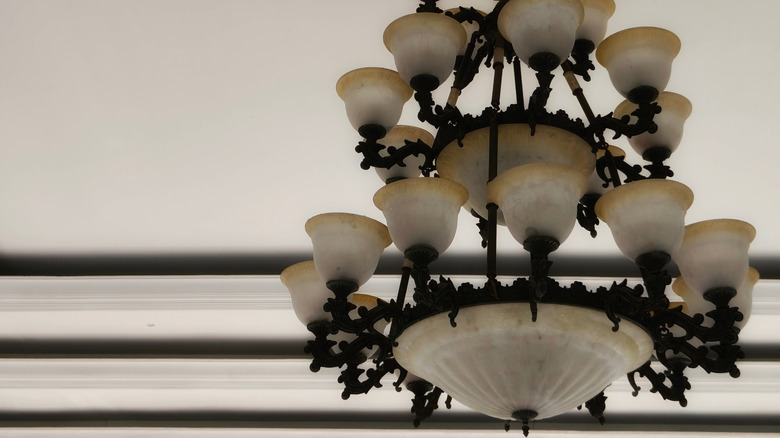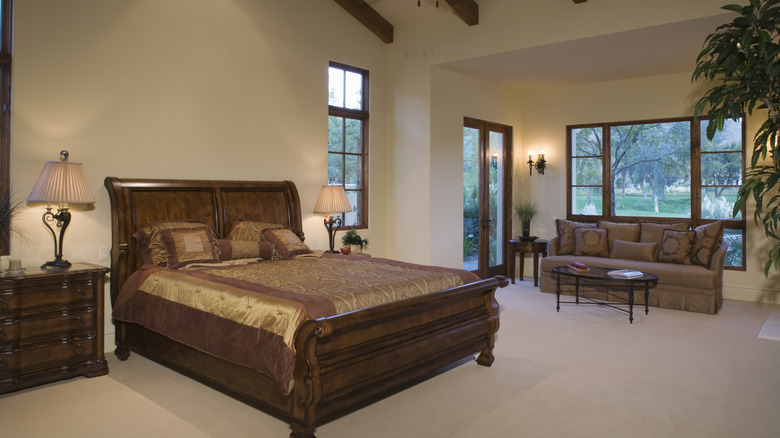15 Once-Popular Home Decor Items No One Uses Anymore
It's funny how fast home décor trends come and go. Not long ago, there were certain pieces and styles that everyone seemed to have — the things that instantly made a house feel "up to date". The same living room that once felt like the height of sophistication might now feel a little dated (or even cringe-worthy). If you think back to the '80s, '90s, or early 2000s, there were certain must-have pieces and design trends everyone embraced. They showed up in magazines, model homes, and your neighbor's living room, and at the time, they felt like the epitome of modern. As styles evolve, many of those once-popular pieces have quietly disappeared from today's homes.
Take wordy wall art, for example. For forever, it seemed every house had some version of "Live, Laugh, Love" displayed across a wall. At the time, it was warm and welcoming, but now it feels more like a meme than decor. Even practical décor choices haven't aged well. Vertical mini blinds, once the standard for large windows and sliding doors, now feel clunky and outdated. At the time, they were considered stylish, maybe even a little on the fancy side. Now? They're the kinds of details people can't wait to paint over, swap out, or quietly send off to the donation pile. But just like fashion, home design is always shifting. The good news is that there are plenty of classic home decor trends that stand the test of time to swap them with.
Word-y signs
There was a time when no home felt complete without a "Live, Laugh, Love" plaque above the sofa. These word-y signs were meant to inspire, but after years of overuse, they've lost their luster. People are swapping obvious sayings for subtle accents that express personality without spelling it out, like handwritten notes framed as wall decor. The trend is leaning toward pieces that tell your story naturally, rather than signs that literally tell you how to feel.
Matchy furniture sets
Matchy furniture sets once promised an instant "put-together" look, with identical sofa, loveseat, and chair in the same color, or a bedroom set where every piece was carved from the same wood and style. While it takes the guesswork out of interior design, this approach feels too cookie-cutter. Today, mixing textures, finishes, and eras creates spaces that look layered and personal. Pairing a modern sofa with a vintage chair or blending different nightstands can look more inviting than a showroom-perfect set.
Faux paint finishes
Faux paint finishes were once all the rage, like sponged, rag-rolled, or glazed walls, meant to mimic marble, wood, or textured plaster. They promised elegance and depth, but today, they often feel heavy-handed and dated. Modern design favors clean lines, neutral palettes, and subtle textures that allow a room's architecture and furnishings to shine. While trendy accent walls can bring your home to life, walls that scream "faux finish" are outdated.
Cluttercore
Clutter was once celebrated as a sign of a lived-in, cozy home, featuring stacks of magazines, knick-knacks on every surface, and shelves bursting with souvenirs. But today, the trend has shifted toward intentionality and simplicity. Instead of filling every nook and cranny, people focus on meaningful pieces that spark joy or reflect their personality, while the rest find a new home or are tossed into storage. There are ways to embrace 2025's cozy homebody era design trend without going overboard.
Vertical mini blinds
The go-to window treatment in homes and apartments was once vertical blinds, especially through the '80s and '90s. They were affordable, practical, and easy to install, but their clunky look and noisy swish — not to mention the difficulty of keeping them clean — became old real fast. Instead, softer options like sheer curtains, roman shades, or roller blinds have taken their place, offering privacy and light control without the harsh, utilitarian vibe vertical blinds gave off.
Framed shower doors
Framed shower doors were once the standard in bathrooms, with thick metal edges and tracks surrounding every panel of glass. Sure, they got the job done, but over time, their bulkiness and high-maintenance design started to feel dated. These frames tend to collect water spots, grime, and mildew, making them harder to keep clean. Homeowners are opting for frameless or semi-frameless styles that feel lighter, brighter, and more open. And we've never looked back.
Wall decals
Wall decals had a big moment in the early 2000s, when everyone wanted an easy, affordable way to add personality to walls with just a peel-and-stick. At the time, it felt fresh and fun, but the look didn't really hold up, with decals often bubbling, peeling, or feeling too much like stickers. These days, we're opting for more depth and staying power, like statement wallpaper, textured paint, or meaningful artwork to bring character to our walls.
Matte black hardware
Matte black hardware burst onto the scene as the edgy, modern alternative to brushed nickel or chrome. Sleek cabinet pulls, faucets, and light fixtures in a flat black finish gave kitchens and bathrooms a bold, dramatic aesthetic. As the trend spread everywhere, it started to lose its fresh appeal. These days, designers think matte black is an overdone finish, preferring warmer ones like brass, bronze, or even mixed metals that are now taking the spotlight.
Throw pillows
The go-to accessory for as long as we can remember to instantly finish the look of a sofa or bed has been throw pillows. But now, that overstuffed look has started to feel cluttered and impractical. Who really wants to move six pillows just to sit down or go to bed? Not us! That's why we're opting for a statement pillow in different textures on the sofa or a pretty quilt for the bed.
White boucle
White boucle furniture is instantly recognizable for its soft, nubby texture and cloud-like look. The super cozy, photogenic fabric became a favorite for sofas and accent chairs, as well as those looking for a clean, minimalist look. While the look works perfectly for Instagram, in the real world, it just isn't the most practical choice. Many are swapping white boucle furniture and accents for textured fabrics in warmer tones and easy-to-care-for finishes.
Heavy window treatments
When you wanted a formal, polished look in living rooms and bedrooms, heavy drapes were the go-to option. Thick, floor-length panels in deep colors made a room feel elegant, and they helped with insulation and privacy. Then these heavy drapes started looking bulky, weighing down spaces instead of enhancing them. Today, these drapes have been replaced with airier window treatments, like linen curtains, sheer panels, or layered roller shades, letting in more light for a fresher look.
Barn doors
Celebrated for their rustic aesthetic and space-saving appeal, barn doors have been a major trend in modern homes over the last several years. If they still have a place in your home, it might be time to rethink them because these barn doors are dating your house. The shift is moving toward alternatives, like pocket doors, sleek sliding panels, or classic hinged doors that combine function with timeless style.
Orange-toned wood
Orange-toned wood, like oak and maple from the late '80s and '90s, was once the ultimate finish. From kitchen cabinets to stair railings and banisters, their warm glow was timeless at the time, but today they often make a space feel dated and overwhelming. In its place, lighter stains, painted cabinets, or natural wood with a softer, more neutral finish are taking over. Kitchens and staircases that feel bright, airy, and versatile, without the overpowering golden-orange tones of decades past.
Overly ornate light fixtures
Once a symbol of sophistication, highly ornate light fixtures laden with intricate scrolls, crystal drops, and gilded finishes now tend to feel more excessive than refined. While making a statement with overhead lighting is on trend, the more ornate ones instantly weigh down a room, making spaces feel stuffy or overly formal. Streamlined pendants, understated chandeliers, and fixtures crafted from wood, glass, or matte metals look lighter and more approachable.
Sleigh beds
Sleigh beds had a big moment in the '90s and early 2000s, and it's easy to see why. With their curved headboards and footboards, they brought drama and a stately vibe to the bedroom. The downside is they're big, heavy, and can make a space feel crowded instead of cozy. Leading the way into the modern era are simpler frames, like low platforms, upholstered headboards, or Scandinavian designs that give the room a lighter aesthetic.
